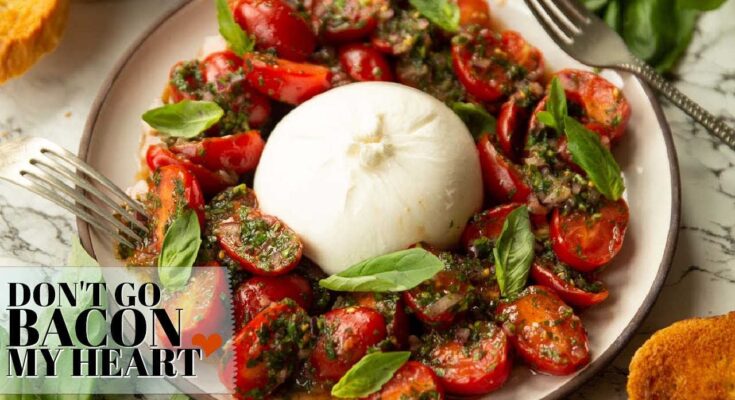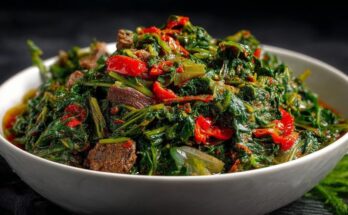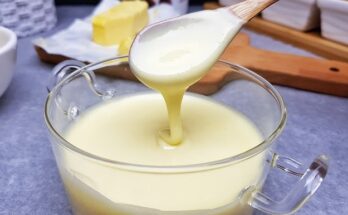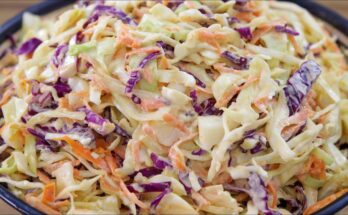Burrata Recipe: Burrata, a luxurious and creamy Italian cheese, has become a favorite for cheese lovers around the world. Originating from the Puglia region of Italy, this cheese is renowned for its rich texture and delicate flavor. Burrata translates to “buttered” in Italian, perfectly describing its luscious, buttery filling.
What makes burrata unique is its structure—it has an outer shell made of fresh mozzarella, while the inside bursts with a creamy mixture called stracciatella, made from shredded mozzarella soaked in cream. The result is a delightful contrast between the firm exterior and the soft, gooey interior.
Whether served as an appetizer, a topping for salads, or the centerpiece of a charcuterie board, burrata adds elegance to any meal. Making burrata at home might seem intimidating, but this guide will walk you through each step, making the process simple and enjoyable.
Ingredients Needed for Burrata
Essential Ingredients:
- Fresh Whole Milk – 1 gallon (preferably raw or pasteurized, not ultra-pasteurized)
- Rennet – 1/4 teaspoon (liquid or tablet form)
- Citric Acid – 1 1/2 teaspoons
- Salt – 1 teaspoon (non-iodized for better results)
- Heavy Cream – 1 cup (for the filling)
- Fresh Mozzarella Curds – 1/2 pound (optional, for the filling)
Optional Add-ons for Flavor:
- Fresh Basil Leaves
- Olive Oil
- Cracked Black Pepper
- Red Pepper Flakes
Choosing high-quality milk and cream ensures a rich, creamy texture. Fresh ingredients are the secret to achieving the authentic flavor and texture of traditional burrata.
Tools and Equipment Required
Kitchen Tools Checklist:
- Large Pot – For heating milk.
- Thermometer – Ensures precise temperature control.
- Slotted Spoon – For stirring and scooping curds.
- Cheesecloth – Helps drain excess whey.
- Colander – Strains curds effectively.
- Mixing Bowls – For separating and preparing ingredients.
- Plastic Gloves – Prevents contamination and helps with shaping.
- String or Twine – For sealing burrata if needed.
Importance of Sterilization:
Sterilizing equipment is critical to prevent bacteria from contaminating the cheese. Boil utensils or sanitize them with vinegar before starting. Maintaining cleanliness ensures a safe and delicious final product.
Preparing the Milk for Burrata
Choosing the Right Milk:
- Opt for fresh, whole cow’s milk or buffalo milk for the best results.
- Avoid ultra-pasteurized milk as it lacks the structure required for curd formation.
Steps for Heating and Curdling the Milk:
- Pour the milk into a large pot and gently heat it to 90°F (32°C). Stir occasionally to prevent scorching.
- Dissolve citric acid in 1/4 cup of cool water and add it to the milk, stirring thoroughly.
- Heat the milk further to 105°F (40°C) and remove it from the heat.
- Dilute rennet in 1/4 cup of water and gently stir it into the milk for about 30 seconds.
- Cover the pot and let it sit undisturbed for 5–10 minutes until the milk coagulates and forms curds.
The milk should now have a gel-like consistency. If it’s still liquid, allow it to set for a few more minutes.
Forming the Curds
Steps to Separate the Curds from Whey:
- Use a knife to cut the curds into 1-inch squares. Make sure the cuts go all the way through.
- Allow the curds to rest for 5 minutes. This helps them firm up slightly.
- Gently stir the curds while heating the mixture to 110°F (43°C). Keep stirring to ensure even heating.
- The curds will begin to separate from the whey. Scoop them out using a slotted spoon and transfer them to a cheesecloth-lined colander.
Handling the Curds Properly:
- Press the curds lightly to remove excess whey.
- Avoid overworking them, as this can result in a rubbery texture.
- Knead the curds gently until they become elastic and smooth.
At this stage, the mozzarella shell for the burrata is ready to be shaped.
Shaping the Mozzarella Shell
Stretching and Molding the Cheese:
- Heat water to 160–180°F (71–82°C) and place the curds in the hot water to soften them.
- Once the curds become pliable, stretch them by folding and pulling repeatedly until they’re smooth.
- Shape the mozzarella into a flat disk, about 4–5 inches in diameter.
Achieving a Smooth Outer Shell:
- Ensure the surface is free from cracks to prevent leaks when filling.
- Work quickly, as the cheese becomes less elastic as it cools.
Preparing the Creamy Filling
Ingredients for the Stracciatella:
- Fresh Mozzarella Curds – 1/2 pound (shredded)
- Heavy Cream – 1 cup (fresh and high-quality)
- Salt – 1/2 teaspoon (adjust to taste)
Mixing the Filling:
- Begin by shredding the fresh mozzarella curds into small, thin pieces. The finer the shreds, the smoother the filling.
- In a mixing bowl, combine the shredded mozzarella with heavy cream. Stir gently until the mixture becomes creamy and slightly thick.
- Add a pinch of salt and stir again. You can also mix in finely chopped herbs like basil or parsley for added flavor.
- Let the filling rest in the refrigerator while you prepare the shell. This helps the flavors meld and gives the mixture a richer texture.
The creamy filling, or stracciatella, is the star of the burrata and provides its signature melt-in-your-mouth experience.
Stuffing and Sealing the Burrata
Combining the Shell and Filling:
- Take the stretched mozzarella shell and create a small pouch or bowl shape. Make sure the edges are thin but strong enough to hold the filling.
- Spoon the prepared stracciatella filling into the center of the pouch. Be careful not to overfill, as it might cause the shell to tear.
- Gently gather the edges of the mozzarella shell and pinch them together to seal the burrata completely.
Sealing for Freshness:
- If the shell is difficult to seal, dip the edges into warm water to soften and make them easier to fuse.
- You can tie the top with a thin string or twine for extra security if needed.
- Once sealed, submerge the burrata in a bowl of salted water to help it retain moisture and shape.
Sealing the burrata properly is crucial to prevent leaks and maintain its creamy interior.
Chilling and Storing the Burrata
Refrigeration Tips:
- After shaping and sealing the burrata, place it in a bowl of lightly salted water to keep it moist.
- Refrigerate the burrata for at least 2–3 hours before serving. This resting period enhances the flavor and texture.
Shelf Life and Storage Hacks:
- Freshness Window: Burrata tastes best when consumed within 24–48 hours of preparation.
- Storage Solution: Store it submerged in its brine or salted water in an airtight container.
- Avoid Freezing: Burrata does not freeze well, as freezing alters its creamy texture and flavor.
Following proper storage practices helps preserve the freshness and quality of your homemade burrata.
Serving Suggestions for Burrata
Pairing with Fresh Ingredients:
Burrata is versatile and pairs beautifully with a variety of ingredients. Here are some ideas:
- Salads: Serve it atop arugula, heirloom tomatoes, or roasted beets.
- Fruits: Pair it with fresh figs, strawberries, or melon for a sweet contrast.
- Vegetables: Roasted zucchini, asparagus, and grilled eggplant complement burrata perfectly.
- Breads: Spread burrata on toasted sourdough or garlic crostini for a delightful snack.
Plating Ideas for Presentation:
- Drizzle Olive Oil: Use high-quality extra virgin olive oil for a silky finish.
- Add Fresh Herbs: Sprinkle basil, oregano, or thyme for a burst of flavor.
- Season Generously: Finish with cracked black pepper, sea salt, and a splash of balsamic glaze.
- Charcuterie Boards: Combine burrata with prosciutto, olives, nuts, and honey for a gourmet appetizer.
Whether served simply with olive oil or as part of an elaborate platter, burrata never fails to impress guests.
Flavor Variations and Seasoning Ideas
Herbs, Spices, and Infusions:
- Herbed Burrata: Mix chopped basil, thyme, or parsley into the filling for an herby twist.
- Spicy Burrata: Add red pepper flakes or chili oil to give it a spicy kick.
- Garlic Infusion: Blend roasted garlic into the cream filling for a rich flavor.
- Citrus Zest: Add lemon or orange zest for a refreshing aroma.
Customizing Burrata for Unique Flavors:
- Infuse the cream with truffle oil for an earthy, luxurious flavor.
- Incorporate sun-dried tomatoes or roasted red peppers for a Mediterranean flair.
- Mix in honey and walnuts for a sweet-and-savory combination.
Experimenting with flavors allows you to create personalized versions of burrata to suit any occasion.
Common Mistakes and Troubleshooting
Avoiding Texture Issues:
- Rubbery Shell: Occurs if the curds are over-kneaded. Work gently to maintain elasticity.
- Watery Filling: Ensure the cream and mozzarella are properly mixed for a smooth consistency.
Fixing Broken Shells:
- If the shell tears, reheat it slightly to make it more pliable and reshape it.
- Use a second layer of mozzarella if the first shell doesn’t seal properly.
Mistakes happen, but with patience and practice, you can perfect your burrata-making skills.
Health Benefits of Burrata
Burrata is not only a delicious indulgence but also provides several nutritional benefits when consumed in moderation.
Nutritional Facts:
- Protein-Rich: Burrata is an excellent source of high-quality protein, which supports muscle growth and repair.
- Calcium Boost: Like most dairy products, it’s rich in calcium, promoting strong bones and teeth.
- Healthy Fats: Its creamy filling contains healthy fats that provide energy and support brain function.
- Vitamins and Minerals: Burrata is packed with essential nutrients, including Vitamin A, Vitamin B12, and magnesium.
How Burrata Fits into a Healthy Diet:
- Low-Carb Option: Burrata is naturally low in carbohydrates, making it ideal for keto and low-carb diets.
- Moderation is Key: While it’s rich in fats, consuming burrata in moderation as part of a balanced diet won’t hinder your fitness goals.
- Pair with Vegetables: Combine it with greens and roasted vegetables to create a nutrient-dense, healthy meal.
- Light Meals: It’s perfect as a light appetizer, reducing the need for heavy sauces or dressings.
While burrata does have a high-calorie count due to its cream content, its nutritional profile makes it a valuable addition to a well-rounded diet.
FAQs about Burrata Recipe
What is burrata?
Burrata is a fresh Italian cheese made from mozzarella and cream. The outer shell is solid mozzarella, while the inside contains a soft, creamy mixture called stracciatella and cream, giving it an unusually soft texture.
How is burrata served?
Burrata can be served in various ways, but it is typically enjoyed fresh at room temperature. It pairs beautifully with a drizzle of olive oil, fresh tomatoes, basil, and crusty bread. Burrata also makes a great addition to salads, pizzas, and pasta dishes.
How long does burrata last?
Burrata should be consumed within 24 hours of purchase to enjoy its freshness and creamy texture. If you must store it, keep burrata in the refrigerator in its original brine and consume within 48 hours.
Can burrata be used in cooking?
While burrata is usually served fresh, it can be used in light cooking. It melts well and can be added to warm dishes like baked pasta or flatbreads just before serving to maintain its creamy consistency.
What are the health benefits of burrata?
Burrata is rich in calcium, phosphorus, and vitamins A and B. However, due to its high-fat content, it should be consumed in moderation within a balanced diet.
Can you make burrata at home?
Making burrata at home can be challenging but rewarding. It requires making fresh mozzarella and then forming it into a pouch to be filled with stracciatella and cream. Detailed recipes and instructional videos can be helpful if you’re attempting to make it yourself.
Conclusion
Making burrata at home may seem like a gourmet challenge, but with this step-by-step guide, it’s entirely achievable—even for beginners! From carefully preparing the curds to crafting the creamy filling, each step brings you closer to tasting this authentic Italian delicacy.
Burrata is versatile, whether served with fresh tomatoes and basil, drizzled with olive oil, or paired with fruits and bread. With practice, you can even experiment with flavors, transforming your burrata into a culinary masterpiece.
So, roll up your sleeves, gather your ingredients, and give this recipe a try. Homemade burrata isn’t just a treat for your taste buds—it’s a labor of love worth savoring.



